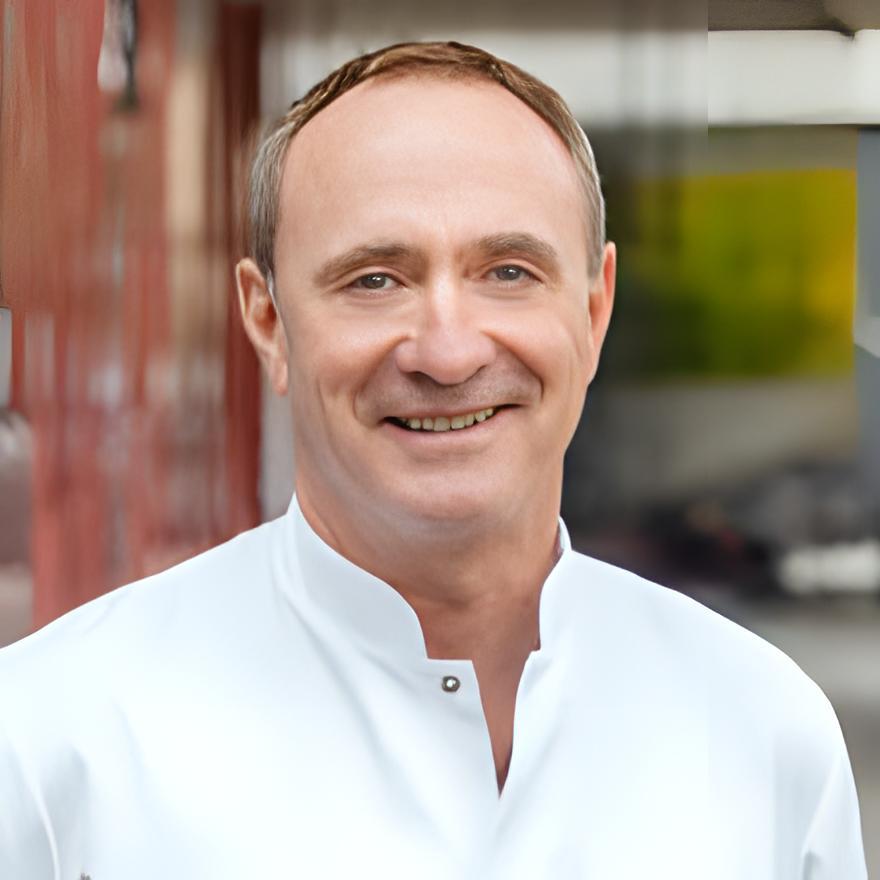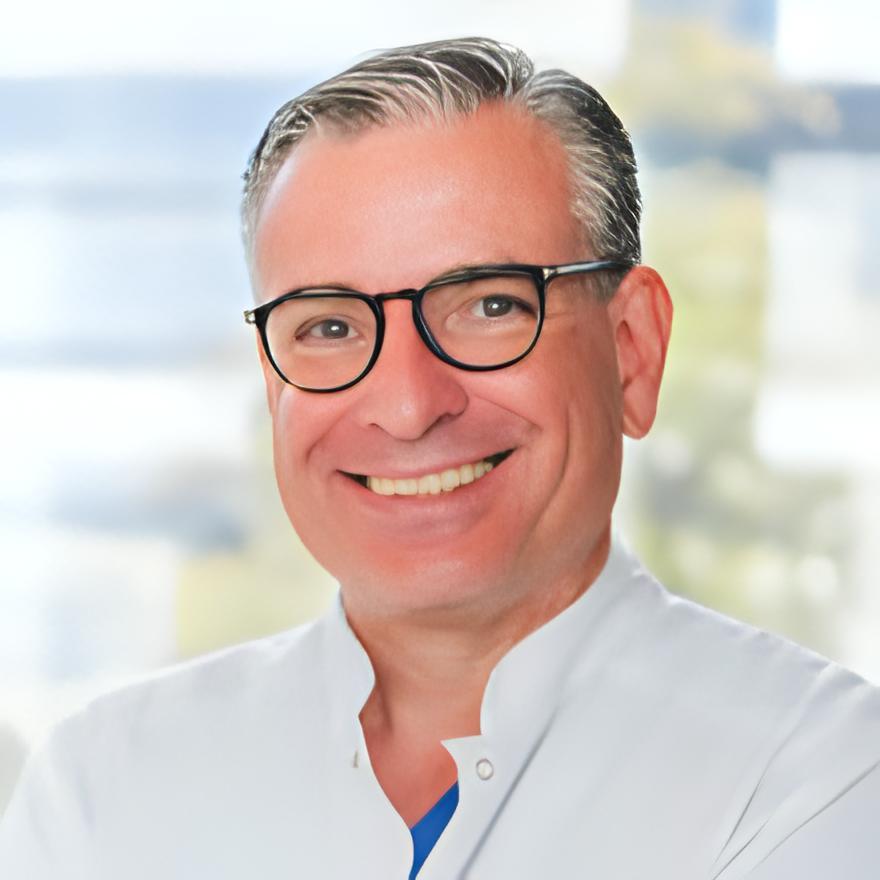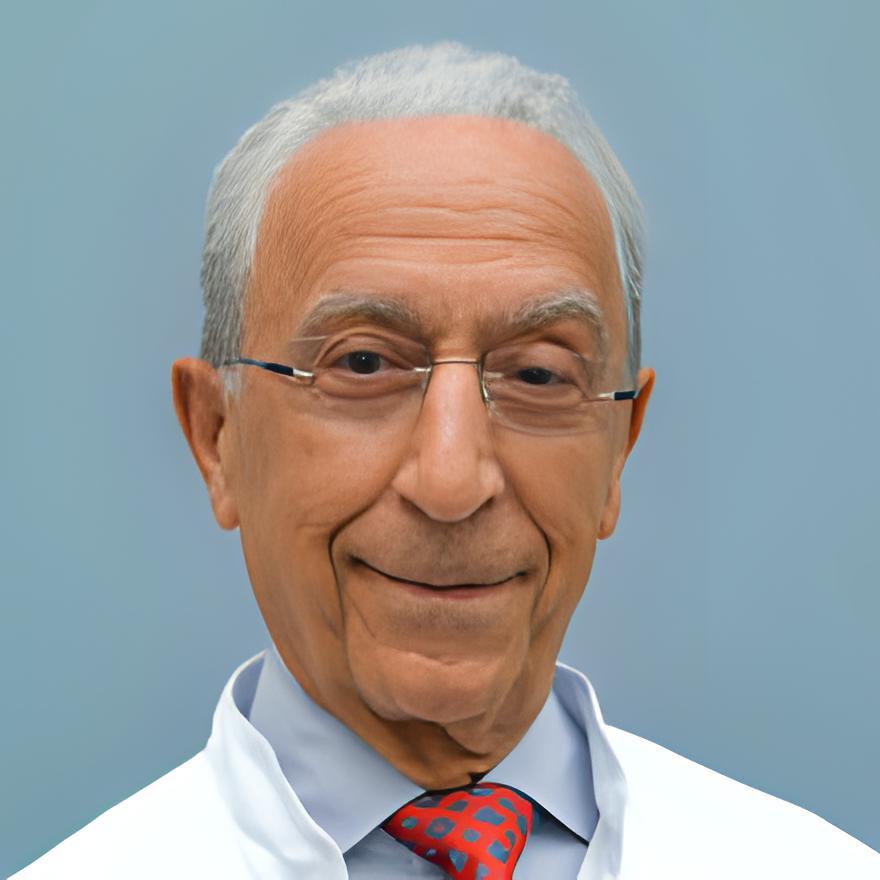Parkinson Disease Surgery Options
According to WHO estimates, since 2000, Parkinson's disease has increased by 81%, and associated mortality has increased by 100% worldwide. The worst thing is that the onset of the disease occurs during the most active period of life (50-60 years). It eventually leads to a slow decay of all vital functions: mental abilities and physical activity are lost.
Early diagnosis and modern treatment methods will help the patient fulfill his professional duties and live an entire life for many years.
What is the danger of illness?
Parkinson's is a disease of the brain that worsens its work. Tremors of the limbs, slow movement, stiffness, and loss of balance manifest it. And the danger also includes complications such as cognitive decline, mental disorders, and sleep disorders.
The disease is caused by the slow death of nerve cells in the cerebral cortex and the destruction of nerve fibers. In the case of loss of more than 80% of neurons, a person is considered incurable despite treatment.
The disease was first identified and described by the British physician James Parkinson in the early nineteenth century and called it "trembling paralysis." Scientists have put the condition in second place in prevalence after Alzheimer's.
To date, the percentage of people suffering from hand and head tremors have increased significantly, up to 80% of cases.
The danger is that none of the relatives or friends pay attention to the first symptoms. They notice a slowness of movement, a decrease in the sleight of hand, and a decrease in facial expression when it is already challenging to correct the situation.
Symptoms of Parkinson's patients
The first signs can be noticed when a person has:
- At rest, tremors of the hands and shaking of the head in different directions.
- Reduced movement speed.
- Loss of orientation and ability to maintain balance.
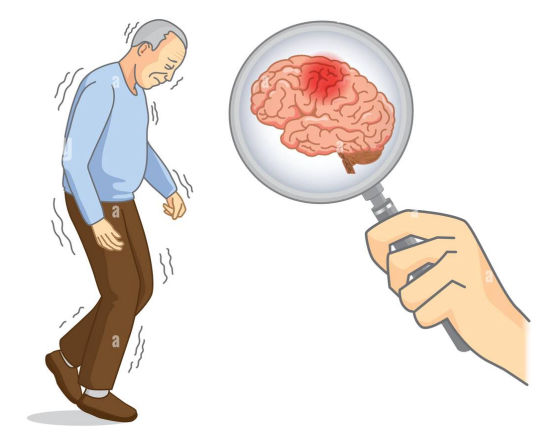 Symptoms unrelated to motor activity are also considered characteristic features:
Symptoms unrelated to motor activity are also considered characteristic features:
- loss of appetite and sense of smell;
- memory and sleep disorders;
- fatigue;
- sweating;
- excessive salivation;
- loss of orientation in time and space;
- handwriting changes;
- depression and anxiety.
For people with Parkinson's disease, stiffness of the whole body is characteristic. Sometimes you notice a slight tremor throughout the body, especially in the limbs, head, lower jaw, and eyelids.
Due to the paralysis of the facial muscles, the face acquires the expression of a "mask." That is, it does not express emotions. A person rarely blinks or smiles, and the gaze lingers on one point for a long time. The gait of people with Parkinson's disease is heavy and clumsy. The steps are small and unstable. The arms do not move when walking but remain pressed against the torso.
Parkinson's disease should not be confused with Parkinsonism. The latter is not a disease; it is simply a condition when the symptoms of the disease appear after some intoxication or head injury.
Causes & risks of Parkinson's disease
Nerve cells in the brain (neurons) transmit signals to each other and different brain parts using particular substances — mediators. One of the mediators is dopamine. In Parkinson's disease, the number of such neurons decreases, and dopamine concentration decreases. That leads to disruption of the brain.
The exact causes of Parkinson's disease are still unknown. Nevertheless, a specific group of factors can provoke the development of this disease:
- Age-related changes in the brain.
- Hereditary predisposition.
- Environmental impact: infectious diseases, poor ecology, the effect of heavy metals.
In addition, scientists have proven that the disease is sometimes secondary when it appears against the background of an existing illness. In this case, the pathology is caused by the following:
- Brain tumors.
- Previously transferred encephalitis.
- Atherosclerosis of the arteries. It often leads to stroke or encephalopathy.
- Drug addiction.
- Degenerative diseases.
- Poisoning with carbon monoxide, ethanol, manganese, or industrial alcohol.
- Head injuries.
After 60, it makes up 1% of the world's population and the older age category (80-85) – from 3 to 4%. Unfortunately, neurodegenerative disease sometimes occurs in young people aged 20 – 40. In men, the condition is more common than in women.
Treatment of Parkinson's disease: possible options
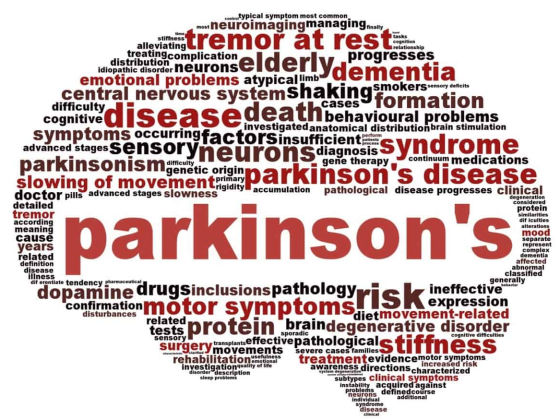 The patient's treatment program is developed individually. Medications are not used if the patient has no pronounced discomfort from the manifestation of her symptoms. At this time, physical therapy classes, physiotherapy, diet therapy, and scheduled visits to the attending neurologist are recommended.
The patient's treatment program is developed individually. Medications are not used if the patient has no pronounced discomfort from the manifestation of her symptoms. At this time, physical therapy classes, physiotherapy, diet therapy, and scheduled visits to the attending neurologist are recommended.
Doctors begin drug therapy if a patient experiences inconveniences or difficulties at home or work related to impaired motor functions. Most often, drugs that stimulate the production of dopamine are used.
Drug therapy, prescribed in the early stages, is very successful. However, Parkinson's disease progresses rapidly, and for the effectiveness of treatment, it is necessary to increase the dose of drugs regularly. Unfortunately, that negatively affects the mental and physical condition of the patient. On average, 75% of patients lose their reaction to the drug after five years of treatment or develop side effects.
Brain Surgery for Parkinson's
The neurosurgical treatment is appropriate if:
- the medications used do not give improvements;
- the tremor does not stop at rest, even when taking solid drugs;
- the therapy is effective, but other serious diseases or side effects of medications interfere with its implementation.
Surgery for Parkinson's disease is used at the advanced stages. Indications for surgical treatment: ineffectiveness of conservative therapy, rapid progression of the disease, age of patients less than 75 years, absence of mental disorders, pronounced side effects when taking medications, duration of the disease — at least five years, lack of severe somatic changes and oncological diseases.
When carrying out Parkinson's surgery, unlike all other surgical treatment methods, the brain tissues suffer the least, and the risk of complications is reduced.
Where is Parkinson's disease treated with AiroMedical?
New treatment options for Parkinson
Unfortunately, no curation can entirely stop disease development. However, there are a lot of Parkinson's disease treatment options that can soften symptoms and improve life quality.
Parkinson's deep brain stimulation and MRI-guided focused ultrasound ablation are among the most effective therapies.
Doctors practicing advanced surgery for Parkinson's patients
About Deep Brain Stimulation
Deep Brain stimulation (DBS) is a safe and low-traumatic intervention in the brain. The essence of the method is the implantation of a unique device that will constantly affect the brain's structures with weak electric currents. Thus, it is possible to reduce the severity of symptoms.
The DBS device consists of three components: the electrode is a thin insulated wire implanted into the brain. A micro cable is a long wire connecting an electrode to a neurostimulator. A neurostimulator is a device that generates electrical impulses.
When is Parkinson's deep brain stimulation used?
For the first time, deep brain stimulation was performed in 1997. And to date, more than 160,000 people around the world have already undergone this procedure. Deep Brain Stimulation (DBS) helped them reduce the severity of their symptoms and improve their quality of life.
DBS is successful in Parkinson's disease, epilepsy (especially drug-resistant), tremors, Alzheimer's disease, pain in cancer patients, etc. For example, a patient with indications for Parkinson's brain surgery is examined by a neurologist, psychologist, and neurosurgeon.
How is the procedure performed?
Parkinson's brain surgery is carried out in 2 stages:
- Under local anesthesia, the neurosurgeon inserts two electrodes. During the installation of wires, the patient can be asked to say something, move his leg, arm, etc. It is essential to understand whether the location of the charges is correct. Computed tomography should also be done after Parkinson's brain surgery.
- Under general anesthesia, the doctor subcutaneously stitches an electrical stimulator into the chest area and connects the electrodes.
After the operation, the patient's sleep is normalized, and the function of the musculoskeletal system is restored. Then the doctor reduces the dose of the necessary drugs for treating Parkinson's disease.
Benefits and risks of DBS
Deep brain stimulation for Parkinson's has a lot of benefits. For example, it is effective when the other treatments have no impact. Moreover, it is reversible, and a doctor can remove all electrodes when needed. Furthermore, the specialist can set the pulses in the best way for each case.
The method of Parkinson's deep brain stimulation has several strict contraindications:
- the age of the patient is over 75 years old;
- positive reaction to the drug Levodopa;
- presence of severe chronic pathologies;
- memory disorders;
- psychiatric diseases.
Postoperative rehabilitation is fast — 3-4 days, and the risk of complications is low. That is the most effective method of Parkinson's surgery, 90% of operations have yielded results.
The main long-term effects of DBS therapy are:
- Decreasing the severity of symptoms of the disease: tremor, stiffness, slowness.
- Reducing the dosage of medications taken.
- An increase in household activity — a person can now eat independently, take a bath, comb his hair, etc. Based on the reviews, deep brain stimulation is highly effective in most patients.
The results showed a 3-year survival rate of 98.6% and a 5-year survival rate of 96.4% for patients who were treated with DBS.
Adverse reactions
Parkinson's deep brain stimulation, despite the complexity of the procedure, is relatively safe. Most patients tolerate it well. However, in rare cases, after neurosurgical treatment of Parkinson's disease, the following complications may occur:
- Brain hemorrhage
- Infectious complications
- Lack of effect due to improper installation of the DBS system
- The breakthrough of the device through the skin.
In addition, after deep brain stimulation for Parkinson, side effects such as periodic tingling in the face or limbs, a feeling of muscle tension, deterioration of balance and gait, difficulty speaking, and double vision may occur. The unpleasant phenom can be eliminated by calibrating the neurostimulator.
Living with a neurostimulator
Computer gadgets, microwaves, and radios do not affect the operation of the neurostimulator. However, when passing through the control at the airport, the metal detector can react with the neurostimulator. In this case, it is necessary to declare a document about the presence of a DBS device in the body.
About MRI-guided focused ultrasound ablation
MRI-guided focused ultrasound ablation is a new and high-promising technology in surgery for Parkinson's. The essence of this technique is the local heating of brain tissues located in the thalamus. During local heating, acoustic sound transmitted by special sensors penetrates the deep layers of the brain. This sound is a focused ultrasound of the highest frequency and power. Therefore, the risk of damage to healthy tissues is wholly excluded. Also, the cells in the path of the beam are not damaged.
This Parkinson's brain surgery significantly affects such symptoms as tremors. The technique uses both magnetic and ultrasound energy. MRI acts like a surgeon's eye and targets ultrasound rays in the critical brain area. And the ultrasound energy acts like a scalpel: heating the brain tissue makes a lesion. By focusing on particular areas of brain tissues, the ultrasound causes ablation (thermal disruption of the tissue).
When is MRI-guided Focused Ultrasound Ablation Used?
MRI-directed focused ultrasound ablation can effectively treat essential pharmacotherapy-resistant tremors. Mainly, specialists use this surgery for Parkinson's patients, whose main symptom is tremors. But the patient must be at least 30 years old.
Today, it is the newest and most effective way to treat tremors in patients with Parkinson's disease. This technique does not affect other symptoms. Instead, it affects only the area of the brain responsible for the functioning of the hands.
How is the procedure performed?
It should do it in three stages. In the first stage, ultrasonic energy is supplied at low temperatures. At this stage, with the help of MRI, the neurosurgeon checks whether the ultrasound is focused correctly.
In the second stage, the temperature rises gradually. The patient is accurately observed. There should be no side effects. Finally, the temperature rises during the last third step before the ablation process begins. The intensity and duration of ultrasonic energy are when complete tremor control occurs.
Benefits and risks of MR-guided ablation
A significant advantage of Parkinson's brain surgery is the possibility of MRI thermography (temperature control). Thus, the intervention can be carried out at relatively low temperatures that do not cause dangerous side effects. In addition, this intervention does not affect normal healthy tissues.
The surgery for Parkinson's does not require incisions, anesthesia, implants, or radiation. The patient can go home on the day of the procedure. The technique allows you to "probe" the place of impact before acting.
The results of the studies showed a significant decrease in tremor in more than 90% of patients. This improvement persisted in about 80% after 2 years of follow-up.
What are the disadvantages?
The procedure can sometimes cause a headache at the time of the process. This technique is forbidden in the following ways:
- Patients with claustrophobia. Contraindications also apply to patients with hematological disorders that can cause extensive bleeding or excessively rapid blood clotting.
- Patients who cannot have an MRI (for example, if there are braces, clips in the brain, and pacemakers incompatible with MRI). Most other implants (joints, teeth, etc.) are not contraindications for Parkinson's surgery.
- Patients with too dense bone tissue (doctors evaluate it before therapy with a brain CT scan).
Long-term Outcomes
Many clinical trials have been conducted to determine the treatment results for Parkinson's disease. Three months after the MRI-oriented ultrasound ablation, patients reported a 50% improvement in their symptoms. Their tremors became less intense and less frequent. Within one year after Parkinson's brain surgery, improvements persisted in 40% of patients. Information on long-term results is still limited. However, studies have shown that the therapy can improve the motor function of Parkinson's patients for more than a decade.
Long-term results depend on the patient's age, general health state, and the chosen treatment's correctness.
Top clinic for innovative Parkinson's surgery
The critical factor for the success of Parkinson's brain surgery is the clinic's quality and the doctor's experience. The AiroMedical team will help you find the best hospital for you. Our database includes 28 clinics and 42 specialists worldwide who are professionals in the treatment of Parkinson's disease.
We offer you the best neurological clinics for the treatment of Parkinson's disease around the world:
University Hospital Rechts der Isar of the Technical University Munich
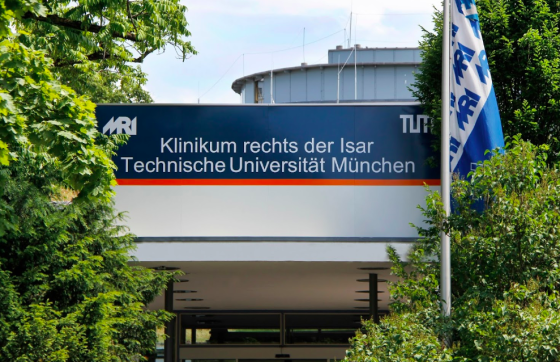 The hospital is famous for its high-quality approach to treatment. It is the second-largest medical institution in Munich. The Department of Neurosurgery has modern equipment for early diagnosis of Parkinson's disease. In addition, the clinic conducts Parkinson's deep brain stimulation procedures under the latest international recommendations. In addition, the hospital specializes in ablative procedures and the treatment of essential tremors.
The hospital is famous for its high-quality approach to treatment. It is the second-largest medical institution in Munich. The Department of Neurosurgery has modern equipment for early diagnosis of Parkinson's disease. In addition, the clinic conducts Parkinson's deep brain stimulation procedures under the latest international recommendations. In addition, the hospital specializes in ablative procedures and the treatment of essential tremors.
University Hospital Frankfurt am Main of Goethe-University
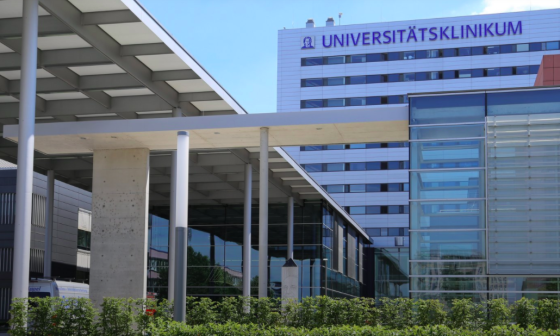 Since the establishment of the hospital, the leading German neurological clinic has been functioning on its basis. The department of neurology is engaged in treating movement disorders (such as tremors, stiffness, and hypokinesis). The primary focus of the neurological clinic is diagnosing and treating Parkinson's disease and other degenerative illnesses. In addition, there is a high-class Deep Brain Stimulation center based in a medical institution.
Since the establishment of the hospital, the leading German neurological clinic has been functioning on its basis. The department of neurology is engaged in treating movement disorders (such as tremors, stiffness, and hypokinesis). The primary focus of the neurological clinic is diagnosing and treating Parkinson's disease and other degenerative illnesses. In addition, there is a high-class Deep Brain Stimulation center based in a medical institution.
University Hospital Medipol Istanbul
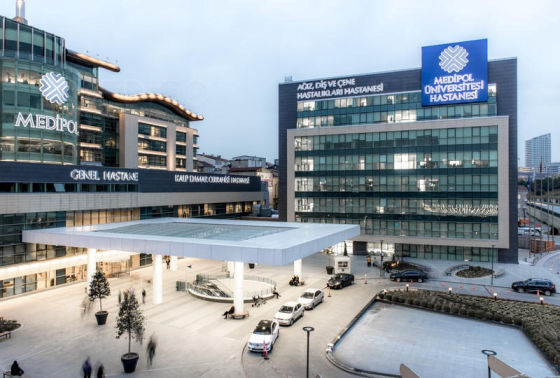 There is a specialized Center for treating Parkinson's and motor disorders (PARMER). In 2019, the medical institution received the status of an “International Training and Reference Center." Renowned neurosurgeon Ali Cirkh runs the clinic. He has more than 1.500 successful operations for Parkinson's disease and motor disorders and more than 1.000 brain stimulation procedures.
There is a specialized Center for treating Parkinson's and motor disorders (PARMER). In 2019, the medical institution received the status of an “International Training and Reference Center." Renowned neurosurgeon Ali Cirkh runs the clinic. He has more than 1.500 successful operations for Parkinson's disease and motor disorders and more than 1.000 brain stimulation procedures.
Beta Clinic Bonn
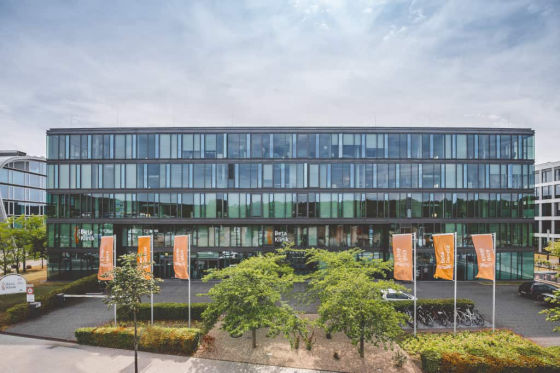 The hospital is a top neurological treatment center specializing in head and brain diseases. The clinic is equipped with certified devices for detailed visualization of brain structures and diagnosis of Parkinson's disease. For treatment, doctors offer laser ablation procedures under the control of MRI.
The hospital is a top neurological treatment center specializing in head and brain diseases. The clinic is equipped with certified devices for detailed visualization of brain structures and diagnosis of Parkinson's disease. For treatment, doctors offer laser ablation procedures under the control of MRI.
Teknon Medical Centre Barcelona
 That clinic is recognized by the European Committee for quality management and has numerous certifications. For Parkinson's surgery, neurologists offer brain laser ablation procedures. In addition, doctors give professional medical care to patients with other movement disorders.
That clinic is recognized by the European Committee for quality management and has numerous certifications. For Parkinson's surgery, neurologists offer brain laser ablation procedures. In addition, doctors give professional medical care to patients with other movement disorders.
Where to go for Parkinson's brain surgery?
Parkinson's disease is not a verdict! Timely treatment is a real chance to return to daily life. Please, contact us, and the specialists of AiroMedical will tell you in detail about the necessary procedures, stages of examination, treatment methods, and prices for services.
References:
- WHO: Launch of WHO's Parkinson disease technical brief
- MedScape: WHO Releases Six 'Action Steps' to Combat Global Disparities in Parkinson's Disease
- National Library of Medicine: MRI-guided focused ultrasound surgery
- National Library of Medicine: Long-term outcomes of deep brain stimulation in Parkinson's disease
